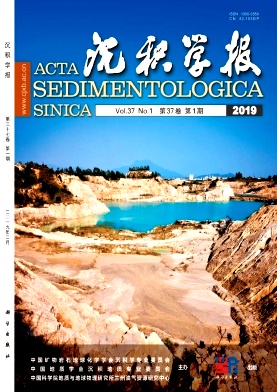Mixed Sedimentation in the Second Member of the Funing Formation in the Jinhu Sag
doi: 10.14027/j.issn.1000-0550.2018.119
- Received Date: 2017-10-16
- Rev Recd Date: 2018-03-22
- Publish Date: 2019-02-10
-
Key words:
- mixed sedimentation /
- Jinhu Sag /
- Funing Formation
Abstract: The Jinhu Sag contains the main oil-bearing blocks in the northern Jiangsu Basin, and mixed sediments of terrigenous fragments and lacustrine carbonates are widely developed in the Second Member of the Funing Formation in the Jinhu Sag. This paper describes a systematic study of the mixed sedimentation of the Second Member of the Funing Formation in Jinhu Sag, with cores, mud logging, well logging, and other study area data acquisition methods. This work discovered that, in the sedimentary period of the Second Member of the Funing Formation in Jinhu Sag, the mixed sedimentary rock with the best micro performance was mixosedimentite formed by mixed deposits of terrigenous fragments and carbonate components, and the best macro performance was obtained from a layered system of terrigenous rock-carbonate rock, terrigenous rock-mixosedimentite, carbonate rock-mixosedimentite, and mixosedimentite. The types of mixed deposits include mainly blended mixed deposits, complex mixed deposits, and some saltatory mixed deposits. This paper carefully analyzes the mixed deposits in the study area, including their geological settings, petrological characteristics, and depositional environments, establishes a mixed sedimentation model, and discusses the controlling factors of the mixed deposits. The main controlling factors are the transgressive effects of the Second Member of the Funing Formation. Tectonic action, climatic conditions, lake surface changes, and provenance also have important effects on the mixed deposits in the study area.
| Citation: | HUO ShaoChuan, DONG GuiYu, WANG BingJie, ZHANG ZhenGuo, LIU JinHua, LIU JianNing, CAO YuPeng, LENG ChunPeng. Mixed Sedimentation in the Second Member of the Funing Formation in the Jinhu Sag[J]. Acta Sedimentologica Sinica, 2019, 37(1): 177-188. doi: 10.14027/j.issn.1000-0550.2018.119 |






 DownLoad:
DownLoad: